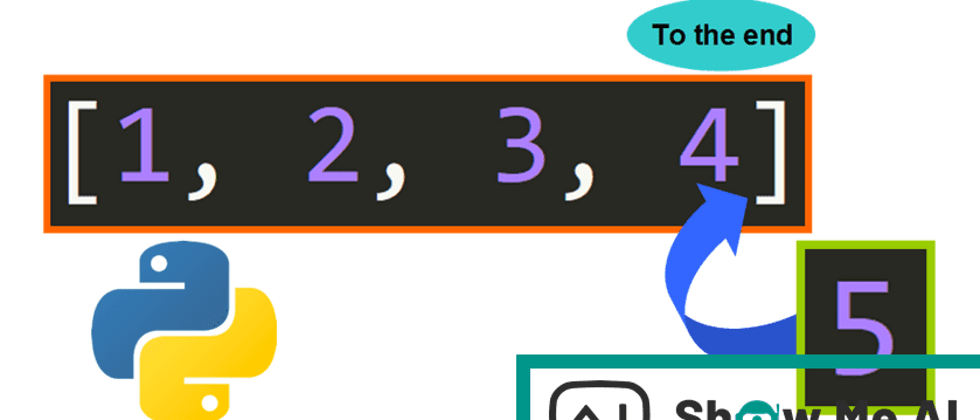作者:韩信子@ShowMeAI
教程地址:http://www.showmeai.tech/tutorials/56
本文地址:http://www.showmeai.tech/article-detail/77
声明:版权所有,转载请联系平台与作者并注明出处
1.Python列表(List)
序列是Python中最基本和常见的数据结构。序列中的每个元素都分配一个数字 - 【它的位置,或索引】,第一个索引是0,第二个索引是1,依此类推。
序列都可以进行的操作包括索引,切片,加,乘,检查成员。
此外,Python已经内置确定序列的长度以及确定最大和最小的元素的方法。
列表是最常用的Python数据类型,它可以作为一个方括号内的逗号分隔值出现。
列表的数据项不需要具有相同的类型。
创建一个列表,只要把逗号分隔的不同的数据项使用方括号括起来即可。如下所示:
list1 = ['python', 'ShowMeAI', 1997, 2022]
list2 = [1, 2, 3, 4, 5 ]
list3 = ["a", "b", "c", "d"]与字符串的索引一样,列表索引从0开始。列表可以进行截取、组合等。
2.访问列表中的值
使用下标索引来访问列表中的值,同样你也可以使用方括号的形式截取子列表。
如下为示例代码(代码可以在在线python3环境中运行):
list1 = ['python', 'ShowMeAI', 1997, 2022]
list2 = [1, 2, 3, 4, 5, 6, 7 ]
print("list1[0]: ", list1[0])
print("list2[1:5]: ", list2[1:5])以上代码执行结果:
list1[0]: python
list2[1:5]: [2, 3, 4, 5]如下为示例代码(代码可以在在线python3环境中运行):
list = ['red', 'green', 'blue', 'yellow', 'white', 'black']
print( list[-1] )
print( list[:-2] )
print( list[-3:] )运行结果
black
['red', 'green', 'blue', 'yellow']
['yellow', 'white', 'black']3.更新列表
你可以对列表的数据项进行修改或更新,你也可以使用append()方法来添加列表项,如下所示(代码可以在在线python3环境中运行):
list = [] ## 空列表
list.append('Google') ## 使用 append() 添加元素
list.append('ShowMeAI')
print(list)以上代码执行结果:
['Google', 'ShowMeAI']4.删除列表元素
可以使用 del 语句来删除列表的元素,如下所示(代码可以在在线python3环境中运行):
list1 = ['python', 'ShowMeAI', 1997, 2022]
print(list1)
del list1[2]
print("删除索引为2的元素后 : ")
print(list1)以上代码执行结果:
['python', 'ShowMeAI', 1997, 2022]
删除索引为2的元素后 :
['python', 'ShowMeAI', 2022]注意:我们后续会讨论remove()方法的使用
5.Python列表脚本操作符
列表对 + 和 的操作符与字符串相似。+ 号用于组合列表, 号用于重复列表。
如下所示:
| Python 表达式 | 结果 | 描述 |
|---|---|---|
| len([1, 2, 3]) | 3 | 长度 |
| [1, 2, 3] + [4, 5, 6] | [1, 2, 3, 4, 5, 6] | 组合 |
| ['Hi!'] * 4 | ['Hi!', 'Hi!', 'Hi!', 'Hi!'] | 重复 |
| 3 in [1, 2, 3] | True | 元素是否存在于列表中 |
| for x in [1, 2, 3]: print x, | 1 2 3 | 迭代 |
6.Python列表截取
Python 的列表截取实例如下:
>>>L = ['Google', 'ShowMeAI', 'Baidu']
>>> L[2]
'Baidu'
>>> L[-2]
'ShowMeAI'
>>> L[1:]
['ShowMeAI', 'Baidu']
>>>描述:
| Python 表达式 | 结果 | 描述 |
|---|---|---|
| L[2] | 'Baidu' | 读取列表中第三个元素 |
| L[-2] | 'ShowMeAI' | 读取列表中倒数第二个元素 |
| L[1:] | ['ShowMeAI', 'Baidu'] | 从第二个元素开始截取列表 |
7.Python列表函数&方法
Python包含以下函数:
| 序号 | 函数 | 作用 |
|---|---|---|
| 1 | len(list) | 列表元素个数 |
| 2 | max(list) | 返回列表元素最大值 |
| 3 | min(list) | 返回列表元素最小值 |
| 4 | list(seq) | 将元组转换为列表 |
# 示例1:长度
list1, list2 = [123, 'ShowMeAI', 'google'], [456, 'abc']
print("第1个列表长度 : ", len(list1))
print("第2个列表长度 : ", len(list2))结果
第1个列表长度 : 3
第2个列表长度 : 2# 示例2:最大最小值
list1, list2 = ['Baidu', 'ShowMeAI', 'google'], [456, 789, 200]
print("第1个列表最大值 : ", max(list1))
print("第1个列表最小值 : ", min(list1))
print("第2个列表最大值 : ", max(list2))
print("第2个列表最小值 : ", min(list2))结果
第1个列表最大值 : google
第1个列表最小值 : Baidu
第2个列表最大值 : 789
第2个列表最小值 : 200# 示例3:转列表
aTuple = (123, 'ShowMeAI', 'google', 'Baidu');
aList = list(aTuple)
print("列表元素 : ")
print(aList)结果
列表元素 :
[123, 'ShowMeAI', 'google', 'Baidu']Python包含以下方法:
| 序号 | 方法 | 作用 |
|---|---|---|
| 1 | list.append(obj) | 在列表末尾添加新的对象 |
| 2 | list.count(obj) | 统计某个元素在列表中出现的次数 |
| 3 | list.extend(seq) | 在列表末尾一次性追加另一个序列中的多个值(用新列表扩展原来的列表) |
| 4 | list.index(obj) | 从列表中找出某个值第一个匹配项的索引位置 |
| 5 | list.insert(index, obj) | 将对象插入列表 |
| 6 | list.pop([index=-1]) | 移除列表中的一个元素(默认最后一个元素),并且返回该元素的值 |
| 7 | list.remove(obj) | 移除列表中某个值的第一个匹配项 |
| 8 | list.reverse() | 反向列表中元素 |
| 9 | list.sort(cmp=None, key=None, reverse=False) | 对原列表进行排序 |
aList = ['Baidu', 'ShowMeAI', 'google']
print("aList : ", aList)
aList.append( 'ByteDance' )
aList += ['ShowMeAI']
print("经过append和+计算后的aList : ", aList)
print("统计ShowMeAI个数 : ", aList.count('ShowMeAI'))
aList.extend(['Taobao', 'Tencent'])
print("经过extend后的aList : ", aList)
print("使用index查找Taobao的索引位置: ", aList.index('Taobao'))
aList.insert( 3, 'DiDi')
print("在index为3的位置insert元素后的aList : ", aList)
print("aList pop出的元素: ", aList.pop())
aList.remove('ShowMeAI')
print("aList用remove删除第1个匹配到的ShowMeAI后: ", aList)
aList.reverse()
print("aList使用reverse逆序后的结果: ", aList)
aList.sort()
print("aList使用sort排序后的结果: ", aList)结果
aList : ['Baidu', 'ShowMeAI', 'google']
经过append和+计算后的aList : ['Baidu', 'ShowMeAI', 'google', 'ByteDance', 'ShowMeAI']
统计ShowMeAI个数 : 2
经过extend后的aList : ['Baidu', 'ShowMeAI', 'google', 'ByteDance', 'ShowMeAI', 'Taobao', 'Tencent']
使用index查找Taobao的索引位置: 5
在index为3的位置insert元素后的aList : ['Baidu', 'ShowMeAI', 'google', 'DiDi', 'ByteDance', 'ShowMeAI', 'Taobao', 'Tencent']
aList pop出的元素: Tencent
aList用remove删除第1个匹配到的ShowMeAI后: ['Baidu', 'google', 'DiDi', 'ByteDance', 'ShowMeAI', 'Taobao']
aList使用reverse逆序后的结果: ['Taobao', 'ShowMeAI', 'ByteDance', 'DiDi', 'google', 'Baidu']
aList使用sort排序后的结果: ['Baidu', 'ByteDance', 'DiDi', 'ShowMeAI', 'Taobao', 'google']8.视频教程
也可以点击 这里 到B站查看有【中英字幕】的版本
https://www.bilibili.com/vide...
资料与代码下载
本教程系列的代码可以在ShowMeAI对应的github中下载,可本地python环境运行,能科学上网的宝宝也可以直接借助google colab一键运行与交互操作学习哦!
本教程系列涉及的Python速查表可以在以下地址下载获取:
拓展参考资料
ShowMeAI相关文章推荐
- python介绍
- python安装与环境配置
- python基础语法
- python基础数据类型
- python运算符
- python条件控制与if语句
- python循环语句
- python while循环
- python for循环
- python break语句
- python continue语句
- python pass语句
- python字符串及操作
- python列表
- python元组
- python字典
- python集合
- python函数
- python迭代器与生成器
- python数据结构
- python模块
- python文件读写
- python文件与目录操作
- python错误与异常处理
- python面向对象编程
- python命名空间与作用域
- python时间和日期









**粗体** _斜体_ [链接](http://example.com) `代码` - 列表 > 引用。你还可以使用@来通知其他用户。